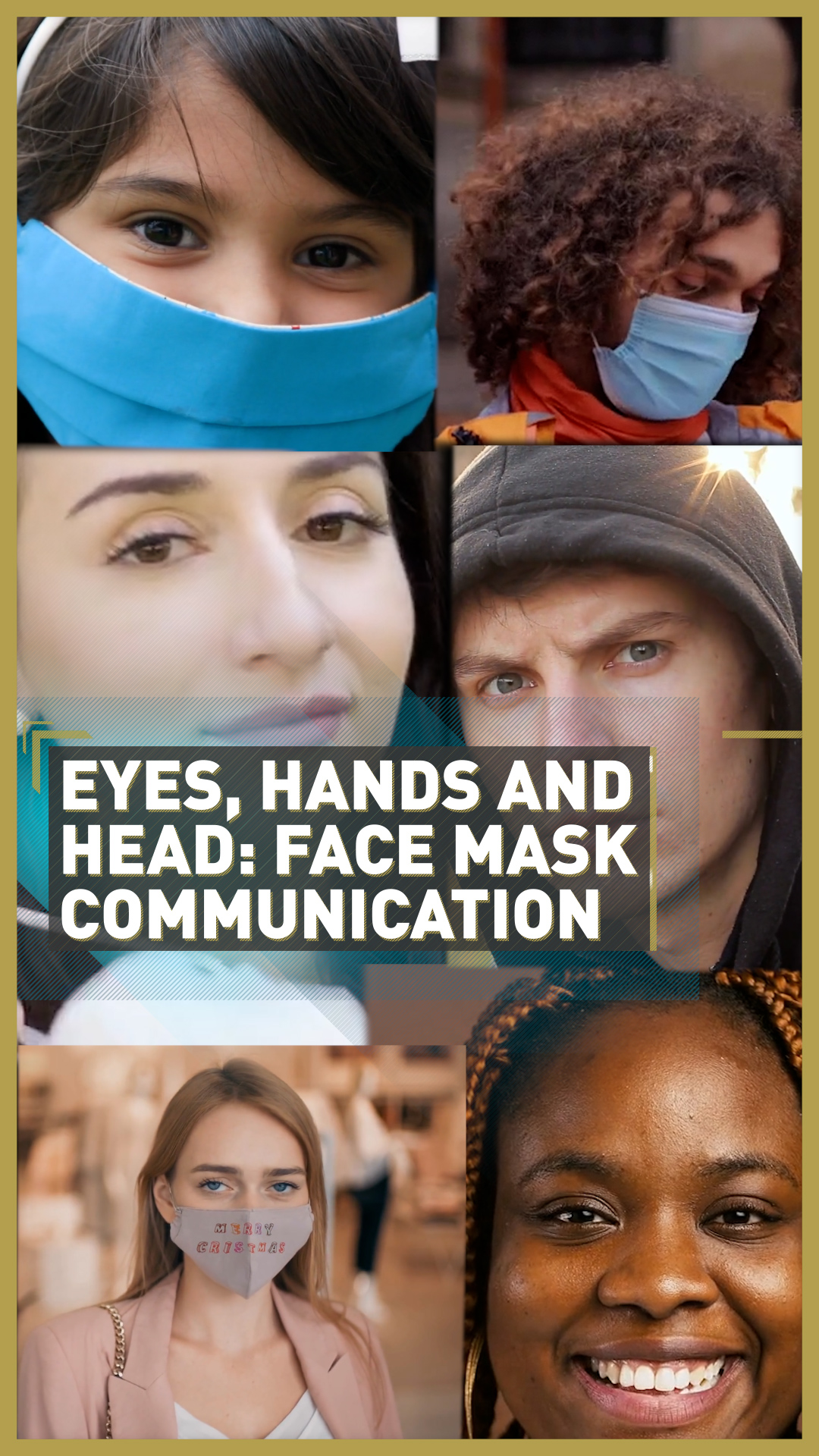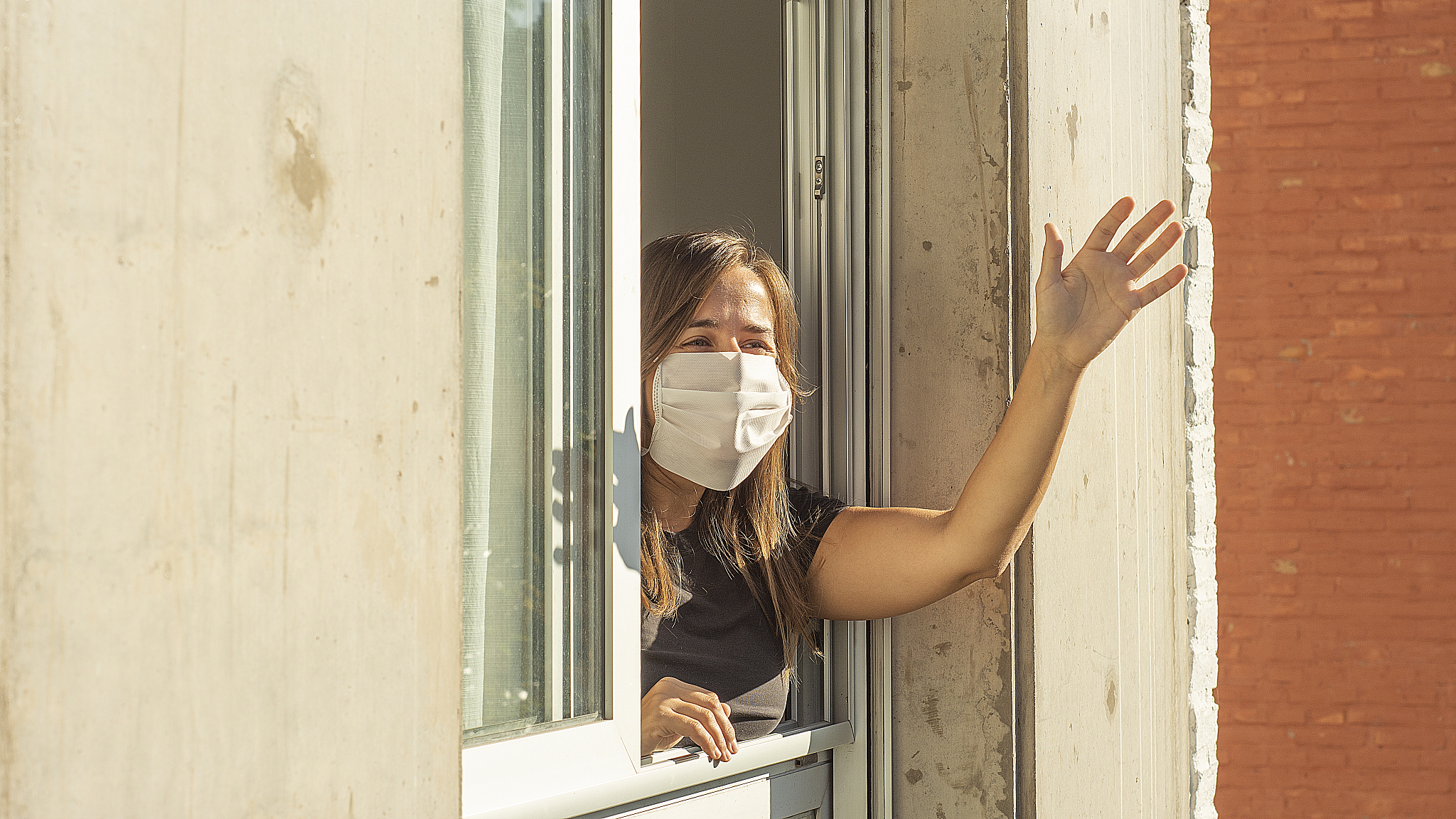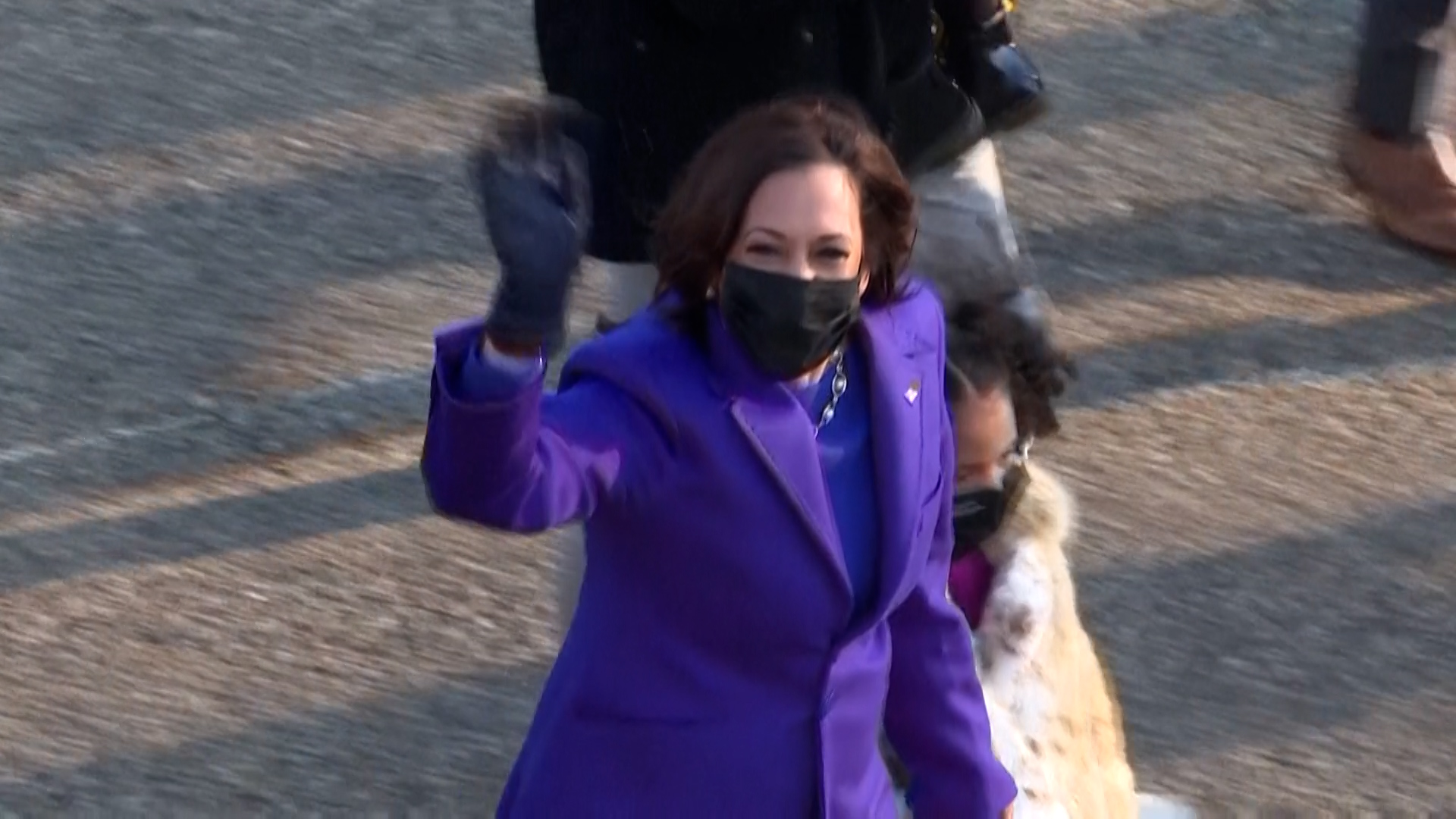03:04

Eye smiles, hand gestures and even head tilts can be effective ways of communicating with others during the COVID-19 pandemic.
Body language expert, Judi James explained to CGTN Europe the importance of changing the way people express themselves while social distancing and wearing a mask.
"To suddenly ask everybody to partially cover the face and socially distance, we can kind of compensate with touch and greeting rituals and things like that. But to get the double whammy of distancing plus covering part of the face has created a huge evolution," James said.
READ MORE:
Conte's future hangs in the balance
What the world has learnt from lockdown
From the arcade to the office: VR at work

Amid social distancing and face mask wearing, communication has become difficult. /VCG
Amid social distancing and face mask wearing, communication has become difficult. /VCG
The COVID-19 pandemic has posed many challenges – communication being one of them.
Before the pandemic, you could usually tell a person's mood or reaction in most countries by their face or, more specifically, their mouth. A smile, a laugh or even a grimace would usually give away a lot.
Face masks have long been common in Asian countries, but less common in Western ones. Wearing masks and being asked to remain socially distanced from one another has meant some people are unable to effectively communicate with each other.
But what can people do to communicate better with others amid coronavirus restrictions? James gave us her five top tips:.
1. Focus on eye expressions
The eyes have always been a good way of communicating with others, but are now even more important.
"The way that we should now be communicating to overcome the hurdle of wearing a face mask is creating a focus on the eye expression. If you're wearing a mask, I think the eyes can be [expressive]; the way they move, the eyebrows, or whether we do an 'eye smile,'" James said.
"We know that you can fall in love with somebody when your eyes meet across a crowded room. So the eyes are more than capable of creating that communication."
2. Avoid the 'poker face'
Although the eyes are a good way of showing your feelings and emotions, they can also unintentionally send out a negative vibe if you're not careful.
"There's an expression. It's like a poker face that we wear out a lot, which we feel is no expression. But in actual fact, you can actually look very dour and very miserable without realizing it," James said.
"That kind of blank eye really will look like the death stare. So it's probably a good idea to have the eyes smile ready a lot of the time."
3. Add hand gestures
Another way of getting your thoughts and feelings across while wearing a mask is by using your hands.
According to James there are three main ways to use your hands to help with communication – Illustrative, emphatic and self-comfort.
Illustrative hand gestures are ones where you use your hands to help explain something you are talking about. Emphatic gestures are best used to back-up a thought or feeling. For instance, if you sound angry or pleased, then simply raising your fists or opening up your hands could help exaggerate that emotion you are feeling.
Self-comfort rituals should not be used to communicate with others, James warned.
"It's the kind of things that Prince Charles does a lot and I think most of us do – the fiddles and the twiddles – and they can distract people rather than help with communication," she said.

'Eye smiles', like this one from U.S. Vice President Kamala Harris, are a good way of communicating while wearing a face mask. /AFP
'Eye smiles', like this one from U.S. Vice President Kamala Harris, are a good way of communicating while wearing a face mask. /AFP
4. Use the head tilt
The head tilt is also an effective way of showing people you are paying attention to what they have to say.
"Many people have suffered tragedies throughout the pandemic and with lockdown taking its toll on many, sometimes just a head tilt to make them aware that you are listening [helps]," James said.
"When you're wearing the mask, they won't always know that you're listening, but the head tilt – that shows concern."
5. Beware accelerated eye blinking
Accelerated eye blinking can be linked to negative emotions, James said.
"Now, you won't always know that you're doing it. But to the other person, that can subliminally register the bored, angry, all sorts of negative emotions," she said.
"I'm not saying that you should deliberately do a very slow blink, because that's just odd. But keep in mind, 'they can only see my eyes.' If someone is doing this to you, however, don't always just assume it's because they are bored or angry, because that may not be the case.
These body language changes that people are having to make are "likely to be appropriate for a very long time, if not forever," James explained.
Have you made any changes to the way you have communicated during the pandemic? If so, let us know what you've done on our social media @CGTNEurope
Video editor: David Bamford

